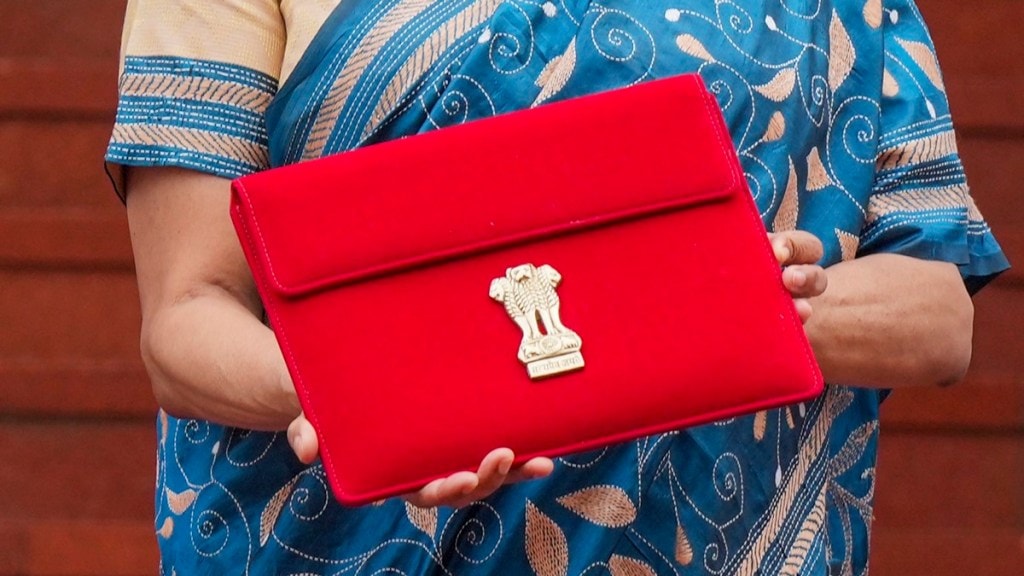Finance Minister Nirmala Sitharaman presented the vote on account or the interim Budget for FY25 while maintaining a balance between inclusive and sustainable growth with fiscal prudence. In a report analysing the interim Budget, SBICAPS said, “Over the last ten years, Union Budgets have consistently emphasized key themes, including a heightened emphasis on capacity expansion through infrastructure development, intensified structural reforms to enhance system efficiencies, increased focus on self-reliance through strategic import substitution and export promotion, and a steadfast commitment to fiscal targets. The Interim Budget for FY25 aligns with these trends, underscoring inclusive and sustainable growth as focal points for the future. The government aims to propel India towards developed status by 2047, coinciding with the centennial celebration of the nation’s independence.”
Tax revenue
The direct tax to GDP ratio reached an estimated 6.7 per cent in FY25. The FY25 interim Budget factors a nominal GDP projection of Rs 327.7 trillion, assuming a 10.5 per cent growth over FY24. Gross tax revenue is anticipated to reach Rs 38.3 trillion, reflecting a 11.5 per cent growth for FY25 vs FY24RE. These projections for both FY24 and FY25 appear conservative given the current momentum, the report stated.
Further, direct tax growth is expected to outpace the indirect taxes given increasing compliance and formalisation. Also, while no major changes in direct tax were mentioned, the government offered relief to taxpayers who have small and old tax demands pending. Net tax revenue is projected to grow by 11.9 per cent (FY25BE vs. FY24RE), surpassing the previous fiscal year’s performance. Non-tax revenues are budgeted for a modest increase. “Our calculations suggest that the government could exceed FY25BE revenue receipts by ~Rs 700 billion,” it said.
Focus on capital expenditure
Capital expenditure for FY25BE has been elevated to Rs 11.1 trillion, marking a 16.9 pr cent increase over FY24RE. Despite the exceptional performance observed in 9 months of FY24, FY24RE has been revised downward by 5 per cent from FY24BE. “This adjustment reflects a careful balance between a heightened focus on infrastructure, fiscal prudence, and potential surges in private capital expenditure,” the SBICAPS report stated.
The Railways Ministry has experienced a mild increase in allocation to Rs 2.55 trillion in FY25BE vs. FY24RE. The National High-Speed Rail Corporation Limited (NHSRCL) has witnessed a substantial rise in outlay. Capital assistance for metro projects, housed in the Ministry of Housing and Urban Affairs (MoHUA), has remained relatively stable. Furthermore, the Roads and Highways Ministry has seen a modest increase to Rs 2.78 trillion in FY25BE vs. FY24RE, with the Road Works department experiencing a more substantial rise compared to the National Highways Authority of India (NHAI). Defence capital outlay is set to expand to Rs 1.72 trillion in FY25BE, surpassing the Rs 1.57 trillion allocated in FY24RE.
Strategic allocation in revenue expenditure
Revenue expenditure, SBICAPS said, is poised to experience a modest uptick of 3.2 per cent, reaching Rs 36.5 trillion in FY25BE compared to FY24RE. A notable trend, it added, is the decrease in subsidy expenditure across various sectors. Simultaneously, allocations towards education and healthcare are witnessing substantial increases of 14 per cent each (FY25BE vs. FY24RE). The allocation for the MGNREGA has been elevated to Rs 860 billion in FY24RE (and FY25BE), surpassing the Rs 600 billion provisioned in FY24BE.
The finance minister announced that new schemes would soon be promulgated, aimed at assisting the middle class in acquiring their own homes. This, per the SBICAPS report, is expected to help the real estate sector, doubling its contribution to GDP over the next decade. The Budget also revealed the intention of the government to focus on green growth, as it announced a major initiative for rooftop solar, covering 10 mn households. Further, to continue innovation in sunrise sectors, a corpus of Rs 1 trillion has been proposed for long term financing in such sectors. This ties up with the focus on youth and skill development which has been indicated.
Roadmap of fiscal consolidation
The government has adjusted its fiscal deficit target to 5.8 per cent of nominal GDP for FY24RE (compared to the initial FY24BE goal of 5.9 per cent), concurrently setting a target of 5.1 per cent for FY25BE. “This trajectory aligns with the glide path towards achieving a fiscal deficit of 4.5 per cent by FY26, underscoring the government’s dedication to prudent financial management. This strategic approach is designed to bolster the fiscal health of the economy and foster long-term sustainability,” it said.
Further, it added that the Budget’s emphasis on fiscal consolidation and the absence of populist announcements are anticipated to have a disinflationary impact in FY25, potentially paving the way for the RBI to contemplate a policy rate cut.

